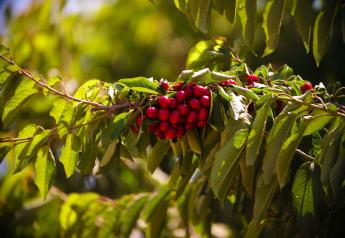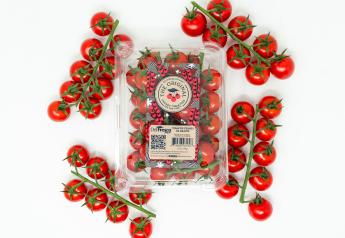California citrus output expected to dip

The severe drought is contributing to what could be a decline in output for California citrus in 2021-22, industry leaders say.
“This year is definitely a lower crop,” said Casey Creamer, president and CEO of California Citrus Mutual.
The 14% decline indicated in the U.S. Department of Agriculture’s orange measurement survey in September may be understating the dip in crop production, Creamer said.
While there will still be plenty of citrus to sell, Creamer said the smaller 2021-22 crop will be much more manageable for grower-shippers.
With the 2020-21 navel crop stretching on longer than usual because of a weaker export market, Creamer said the 2021-22 navel season was on track to start by mid- to late October.
Multiple factors have led to a lighter crop load, Creamer said.
For one thing, citrus groves experienced a couple of years in a row of heavy crop loads. Often, a lighter crop follows a heavy crop, he said.
The other major factor, Creamer said, is that late picking may have affected the 2021-22 fruit set. The slow export market held back some navel growers from harvesting fruit until new crop fruit was in the development stage.
“The lack of export markets really affected the movement on the domestic market and some people got passed over, unfortunately,” Creamer said.
If a crop on the tree is competing with flowers and new crop fruit set, that can lead to a lighter crop.
Some growers who picked fruit late are looking at a very light crop.
Logistics for exports remain challenging, Creamer said.
“Every report we get is the situation is not getting better, it’s getting worse,” he said.
While there are political efforts to free up the container markets for export, Creamer said the industry is preparing for the “long haul” on the issue.
Water outlook
The impacts of the water shortage and the drought are variable, Creamer said.
“The impacts could be virtually no impact to very, very drastic impact, depending on where growers are located and their surface water rights and what district they are in,” he said.
Growers have managed their way through the drought.
“The major issue this last season was the cost and availability levels,” he said, adding that growers faced big expenses because of the cost of water and upgrading pumps.
“It is not a very easy season when it comes to water for a large portion of our growers,” he said. “The major concern is this next year,” he said.
Without a wet water year in the winter and spring, Creamer said “it is going to get a whole lot worse, really quick.” The effects will be felt by growers and the communities that surround them.
Mandarin output also is expected to be lower in 2021-22, Creamer said.
On the other hand, Creamer said lemons may see increased volume. Seedless lemons represent a small but growing segment of the industry.
Based on early estimates, Alyssa Houtby, senior director of federal affairs for California Citrus Mutual, said mandarin supplies could be as much as 50% lower compared with a year ago.
Mandarins are as much as 70% down on existing fruit-bearing trees, but that is partially offset by new bearing acreage coming on.
Big picture
Roughly 75% of the California citrus crop is grown in the Central Valley, with some lemons and mandarins produced in the coastal regions. Lemons and grapefruit are primarily raised in the desert growing areas.
Organic citrus production is a relatively small part of the industry, and Creamer said the industry’s fight against the spread of the Asian citrus psyllid and HLB make organic farming even more challenging because of limited organic pest prevention options.
California’s citrus growers have been successful keeping HLB out of commercial groves since the Asian citrus psyllid first showed up in California in 2008 in San Diego County.
“Our goal was to protect the commercial industry from this threat, and (the industry) has been successful in doing that,” he said.
“Having said that, this is not something that we can rest on our laurels, claim victory and move on,” Creamer said. “This is still a very serious issue, and it needs everybody on board to continue to fight it.”







